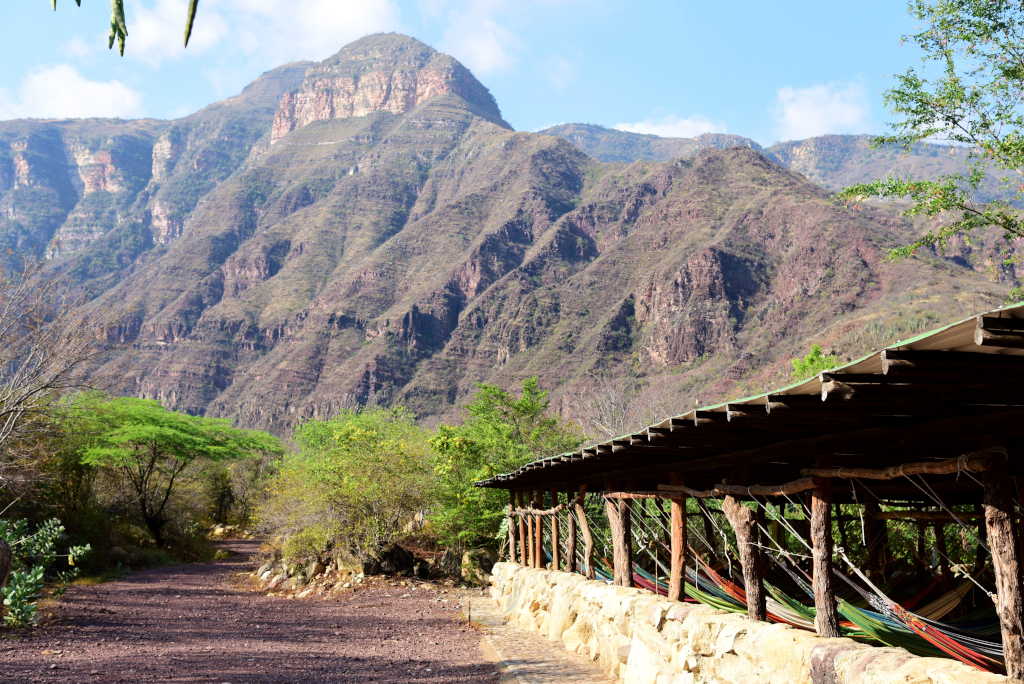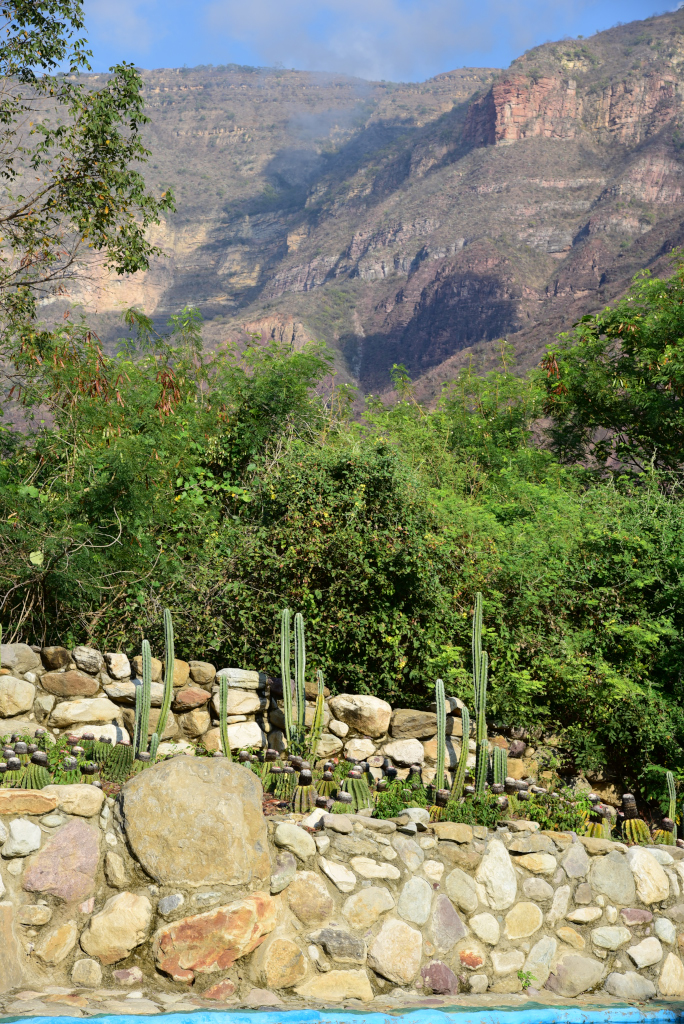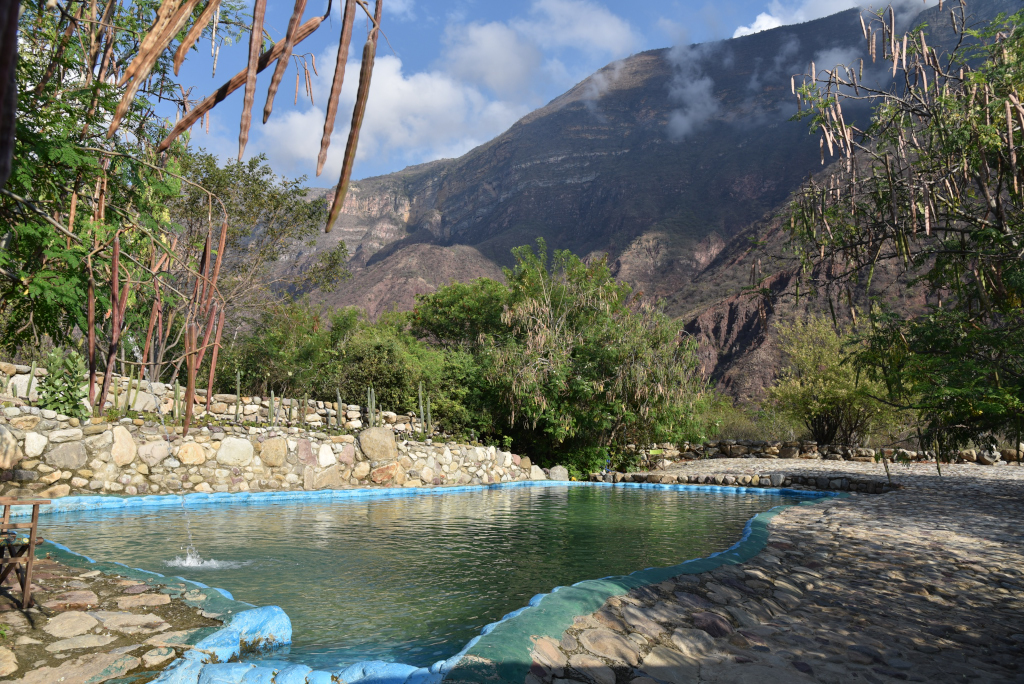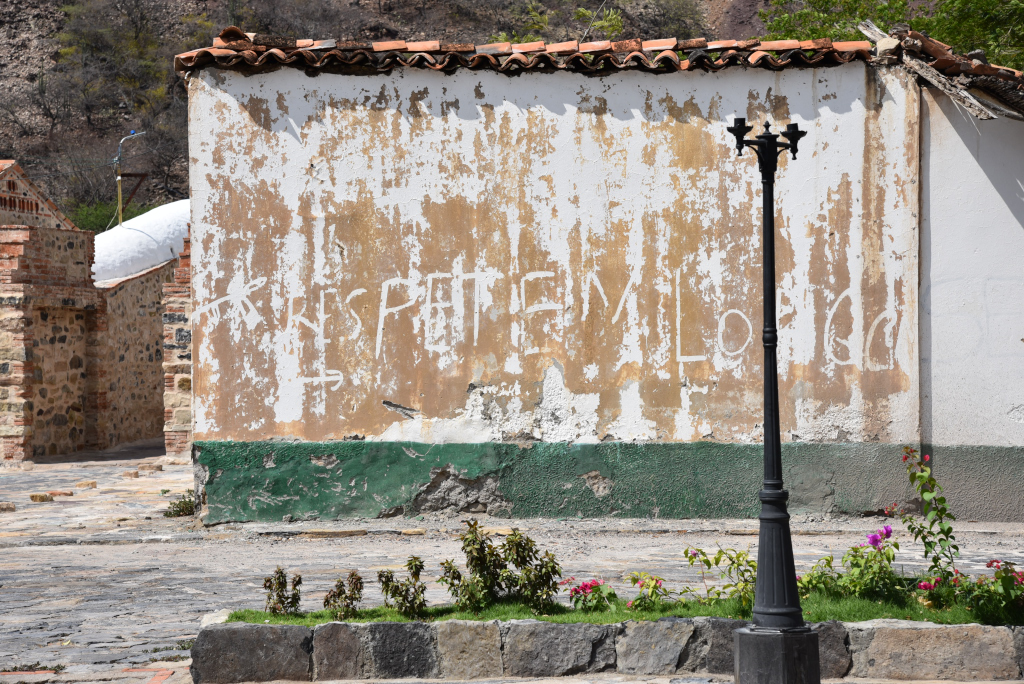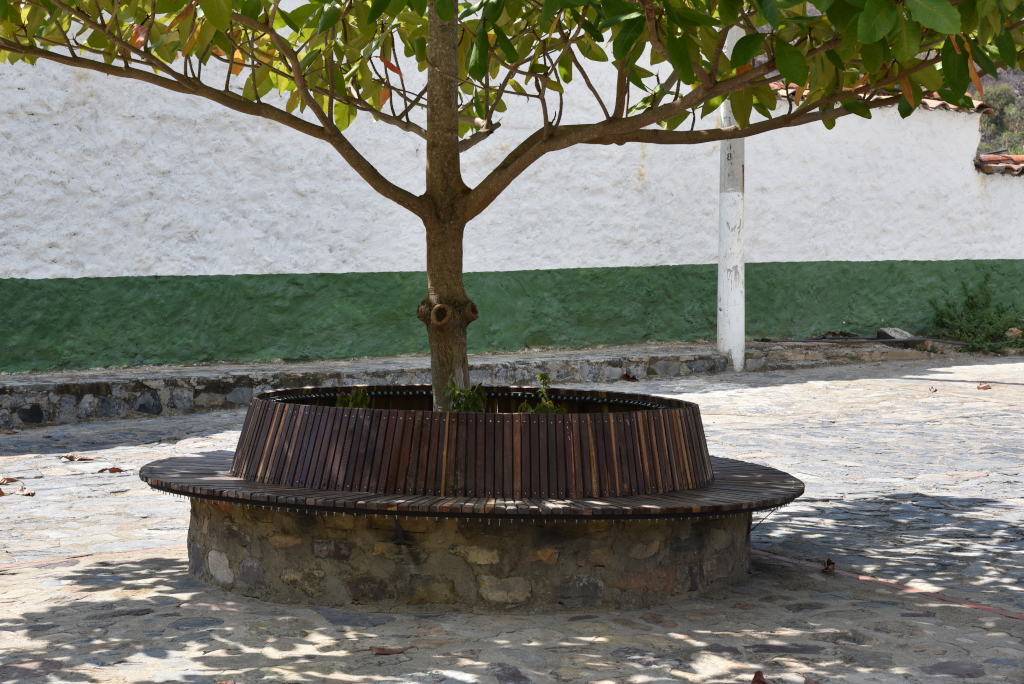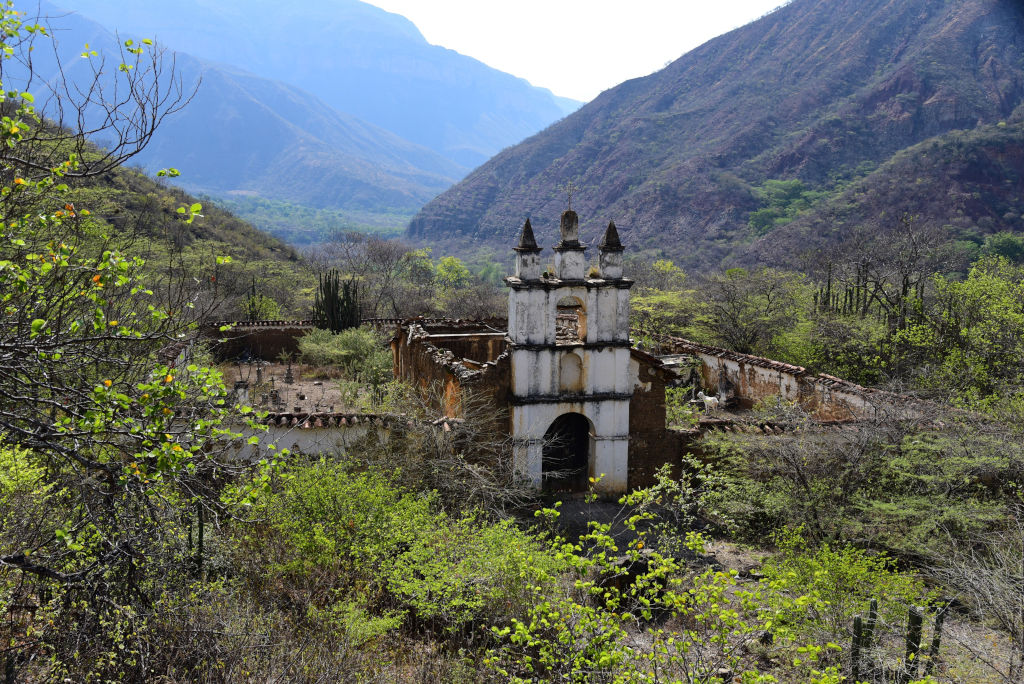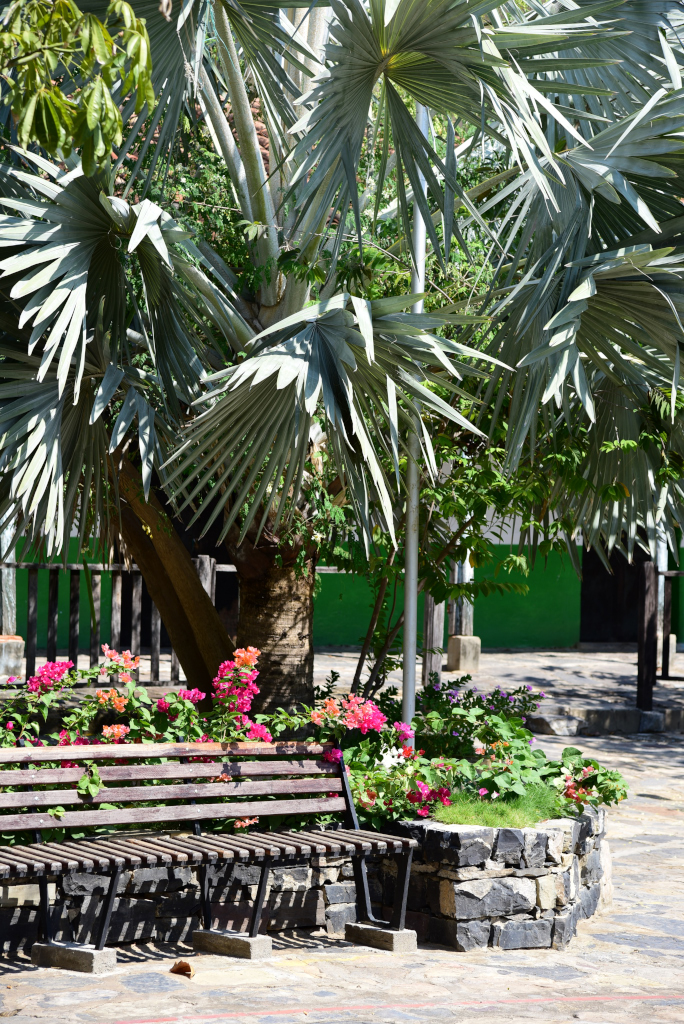February 13, 2018
I am greeted upon waking up early in the morning at Shangri-La by the minor inconvenience of sleeping out in the open in a hammock. Around me are long rows of identical hammocks slung under the open roof area, with absolutely no one present except myself. The early morning hours here are magical, but the sweet sensuality of those early hours wears off quickly as the sun rises above the cliffs lining the edge of the canyon, the light becoming more glaring, and the heat quickly rising.
I made a point of sleeping next to a ledge where I could leave some essential personal belongings. The thought crosses my mind that things would vanish while I am sleeping, due to either fleet fingers or some inquisitive animal; certainly in such a remote location and furthermore, in what is presumably a gated compound, the possibility of random theft seems very remote. I can hear a man and woman chattering at some distance, although I see no one else in this open hall area.
The primary accommodation at Shangri-La is this: an open-area, barn-like structure with long rows of hammocks slung next to each other. Unbelievable as it may seem, entire classes come here at least several times a month, and may even hike down the canyon face in the same manner that I did, which seems utterly improbable – and yet I am assured of the fact repeatedly. Adjacent the sleeping area is a restaurant, a long, again open-concept kitchen located behind a bar, and on the other long benches set against tables, where guests can eat. Workers near the water’s edge laboriously craft the beginnings of stone cabins from hewn rock; once completed, Shangri-La will offer formal accommodation.
I am currently the only guest – at least staying in the open air hammocks. There are two older men from Bucaramanga here for the day, with whom I speak with at length. They tell me they love coming to this isolated, exotic spot on a regular basis, and that the canyon is actually a major hiking destination for locals. Entire groups apparently regularly hike up and down the canyon walls, quickly dispelling my notion that yesterday’s hike was some Olympic feat. People hike back and forth the same day, run the trail, and so on … Well, count me out of those activities!
The property was apparently bought by a wealthy businessman from Bucaramanga who decided to spend his pasta fortune on this enormous property on the floor of the Chicamocha canyon, having the entire complex built out of the rocks that create the foundation of the canyon. Workmen blow up selected areas, then chisel the resulting rockfall into appropriately-sized pieces, using them to construct walkways, benches, tables, low walls, and most importantly, the big swimming pool whose water is continually refreshed with water from a local spring, and surrounded by terraces arranged with local cacti, primarily the Melocactus schatzlii subs. chicamochae, the small, bulbous affair with crowning white button, from which spring tiny pink flowers I saw littering the canyon wall on the way down yesterday.
The swimming pool brings things to a different level, the placid expanse of water fed by the splashing hose on one end, the exotic cacti encasing the perimeter of the pool on one side, dry shrubbery above, on the other side, a broad stone terrace with deck chairs, and the soaring canyon wall on the far side of the narrow river. Then the absolute bliss of floating in the pool, staring at the heavens above, the growing desert heat in the air and refreshing coolness of the spring water. If there were any reason to come to Shangri-La, it would be the pool, particularly given that there are rarely guests here (especially mid-week). I am torn between just wanting to hang out at the pool and leaving the compound to go exploring …
Finally, after an extended period in the pool and chattering with the staff, I am off on the walk to the town of Jordan, which is just over two kilometres from the compound. Once I reach the main road, I sense that the environment around me is luxuriant, relaxed and welcoming, unlike the mysterious and somewhat threatening darkness I arrived in yesterday evening. I am surrounded by green, the richness of the foliage belying the parched landscape I saw below me descending the canyon wall yesterday. The gravel road turns gradually, rising and falling, clearings in the green offering panoramic views of the river and the escarpments rising to the sides of the valley.
While there is only a small population living in the valley, signs of cultivation are omnipresent, although most of the greenery at the sides of the river appear to be wild.
The overall dryness of the landscape is underlined by the clusters of cactus that erupt from the landscape and acacia-style trees. Higher up towards the cliffs, the greenery recedes into lower profile shrubbery. In periods of substantial rainfall, I can imagine the canyon changes dramatically, the narrow, winding river changing quickly into an enormous, raging torrent.
The town of Jordan is a quiet affair, very modest and small, with somewhat of a Wild West feeling, possibly due to its remoteness and the surrounding landscape. As diverse as the country is, you would find very few towns in remote, arid, mountainous landscapes such as this. Arid is typically not a description one would use for much of Colombia. Few people are to be seen in this town, which seems altogether abandoned, although a stretch of old, crumbling houses is being rebuilt. Apparently, Jordan is to be revamped to welcome a greater number of tourists to this exotic enclave in the highlands of Colombia.
I am told that Jordan is one of the oldest towns in the country, which seems unlikely, to say the least. Even now, the town and the floor of the canyon is virtually unreachable, the only road vehicles can use a lengthy winding dirt road leading up to the highway between Duitama and Bucaramanga. Immediately to the north and at the crest of the canyon wall lies Los Santos, a major town in the Santander department, but connected to the floor of the Chicamocha by nothing more than a serpentine, rocky trail.
The town centre focuses on an old, whitewashed church and pretty plaza with a shallow pool lined with benches and picturesque shrubbery. The beauty of the place feels almost improbable, and yet it is unclear what you would do here, as there are virtually no services, other than a small posada catering to itinerant visitors and a kiosk on the plaza selling odd, greasy snacks. At the top of a steep, sweaty trail lies Jordan’s graveyard, a scenic affair with wonderful views of the surrounding canyon and town below. The crowning structure of the graveyard is the towering facade of a church, now largely in ruins.
The light is lowering and I have to return, and I don’t want to be caught in the darkness as I was yesterday. I also don’t want to miss dinner in the Shangri-La restaurant, as there would be no other option, given the absence of stores and restaurants of any sort in the area. The pale blue shading of the cliffsides has turned into rich earth tones in the late afternoon sun. The heat of the day has dissipated somewhat, the shadows lengthening across the valley, the darkness engulfing the canyon before I have returned to the Shangri-La enclave. Happily, I have brought my flashlight, which guides me on the last stretch, although I have to stop by the lit house of the neighbors for direction, as I did yesterday evening.
I feel I have squandered much of the day today – or have I? How could that be possible in such a slow-moving environment, where the most important thing to do is presumably just experience the magical ambiance of the remote canyon environment? I can’t seems to contextualize this environment in a country like Colombia, where the entire centre is given over to temperate highlands – and the rest of the country is dry, tropical savannah, other than the jungles of the Chocó to the west.




